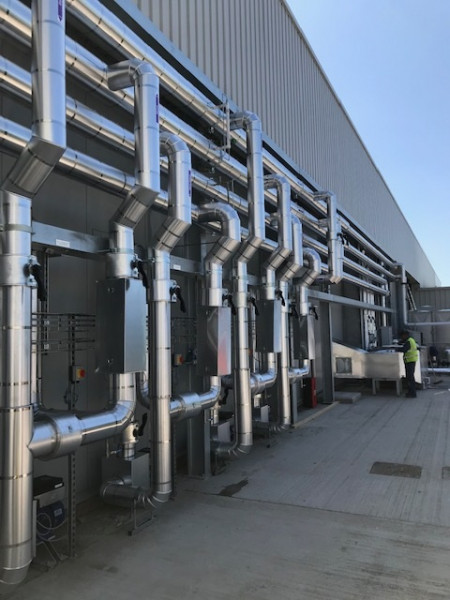
Electrical trace heating, typically applied through the use of cables, has a number of differentim portant uses. On one hand, it is used to prevent pipes, silos and vessels from freezing, but it can also be used to maintain a desired temperature on pipes to keep liquids moving. Additionally, it is frequently used with vessels, as they typically require temperature maintenance. Here are three key uses of trace heating:
Through maintaining the temperature of the liquid at a level above freezing point, trace heating is an effective way of protecting pipes and vessels from the risk of freezing. The way in which this is achieved is through supplying heat in order to balance the amount of heat lost through conduction. Therefore, if you need to protect external pipes, silos, vessels from frost, trace heating and thermal insulation is the tried and tested solution.
Some products including, butter, jam, soups, oils etc require specialized trace heating to maintain the viscosity of the product. If this is not maintained correctly then the product could become tainted, burnt or solidifying in the pipes.
Some products may be sited in high risk, flame proof areas. In locations below freezing point or high ambient temperature locations.
Whatever the project size, we can provide total solutions for trace heating including design, component supply and after sales service.
All works undertaken to achieve BS6351 (1983) Parts 1, 2 and 3
Trace heating is achieved by connecting specially engineered cables made of a resistance element to a pipe. The electric cables are then used to maintain temperatures by replacing heat loss with their power output.
One of the biggest upsides of trace heating is that the cables can cross each other without any risk of overheating.
Trace heating cables are simple to install and can be attached to pipework or vessels. The heating elements can be cut to any desired length, enabling them to be altered to allow for any changes made onsite and therefore minimising delays.
Trace heating is in fact one of the most energy efficient solutions, as the cables only focus output to the area of the pipe or vessel where it is most needed. Combined with effective thermostat controls, energy usage can be kept to a minimum.
Trace heating requires very little maintenance to run. This is due to the self regulating tape and thermostat controls, which adjusts heat output to equal the heat loss from the pipe work. As pipe temperature falls, the electrical conductivity of the polymer core increases, causing the tape to increase output. As the pipe temperature increases, the conductivity reduces and output decreases. This means that virtually no manual controls are required and the trace heating largely operates on its own.